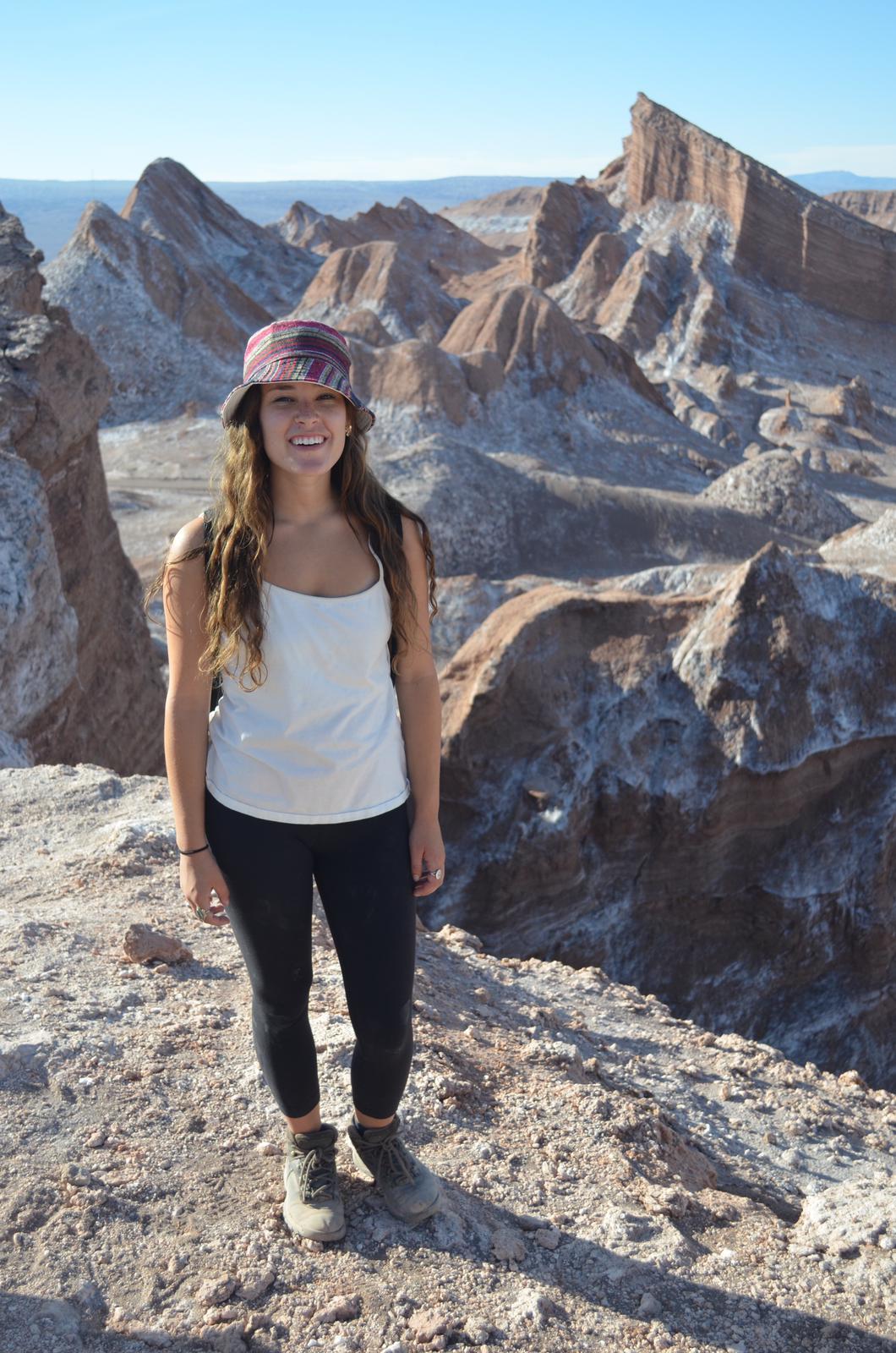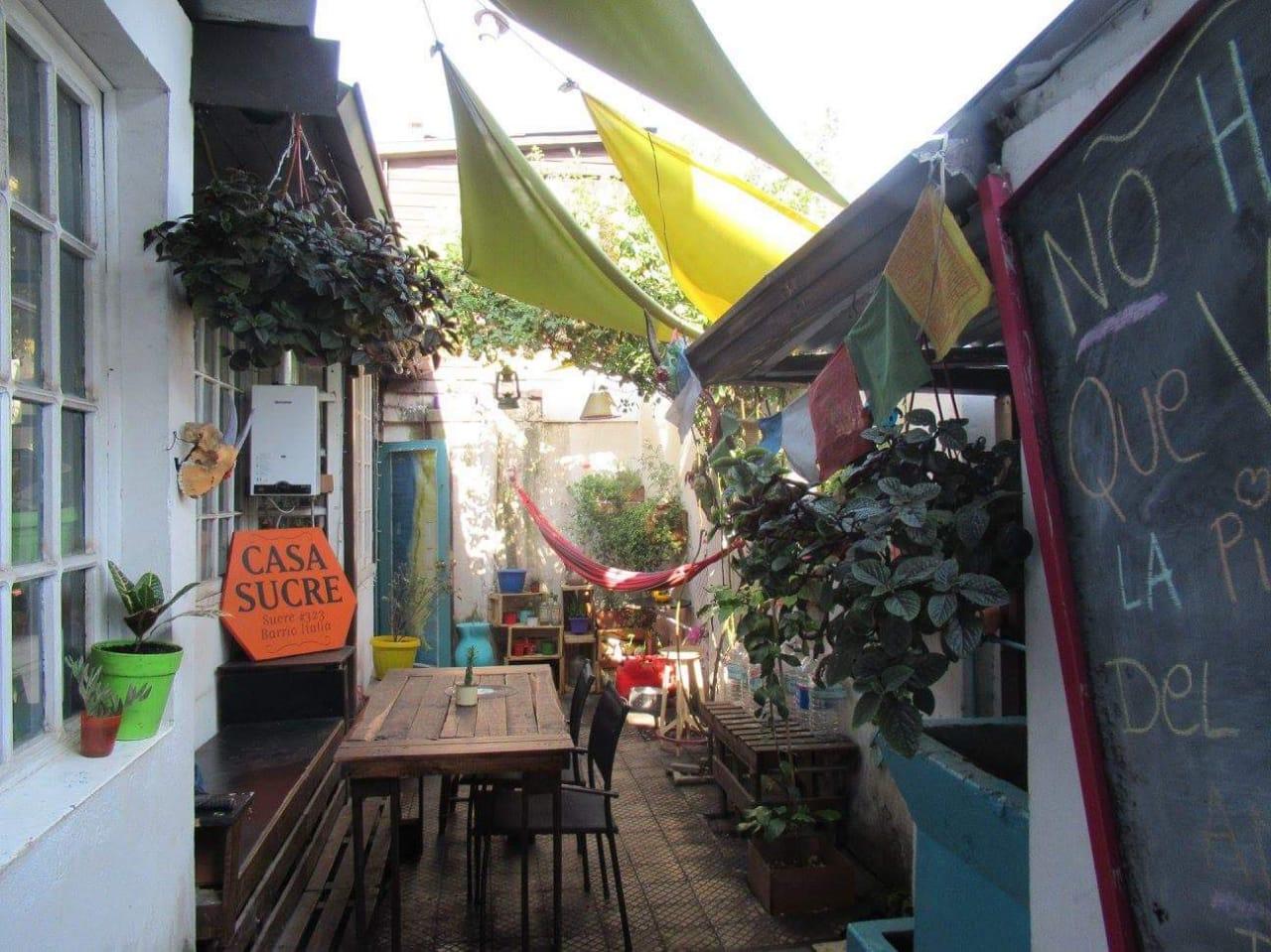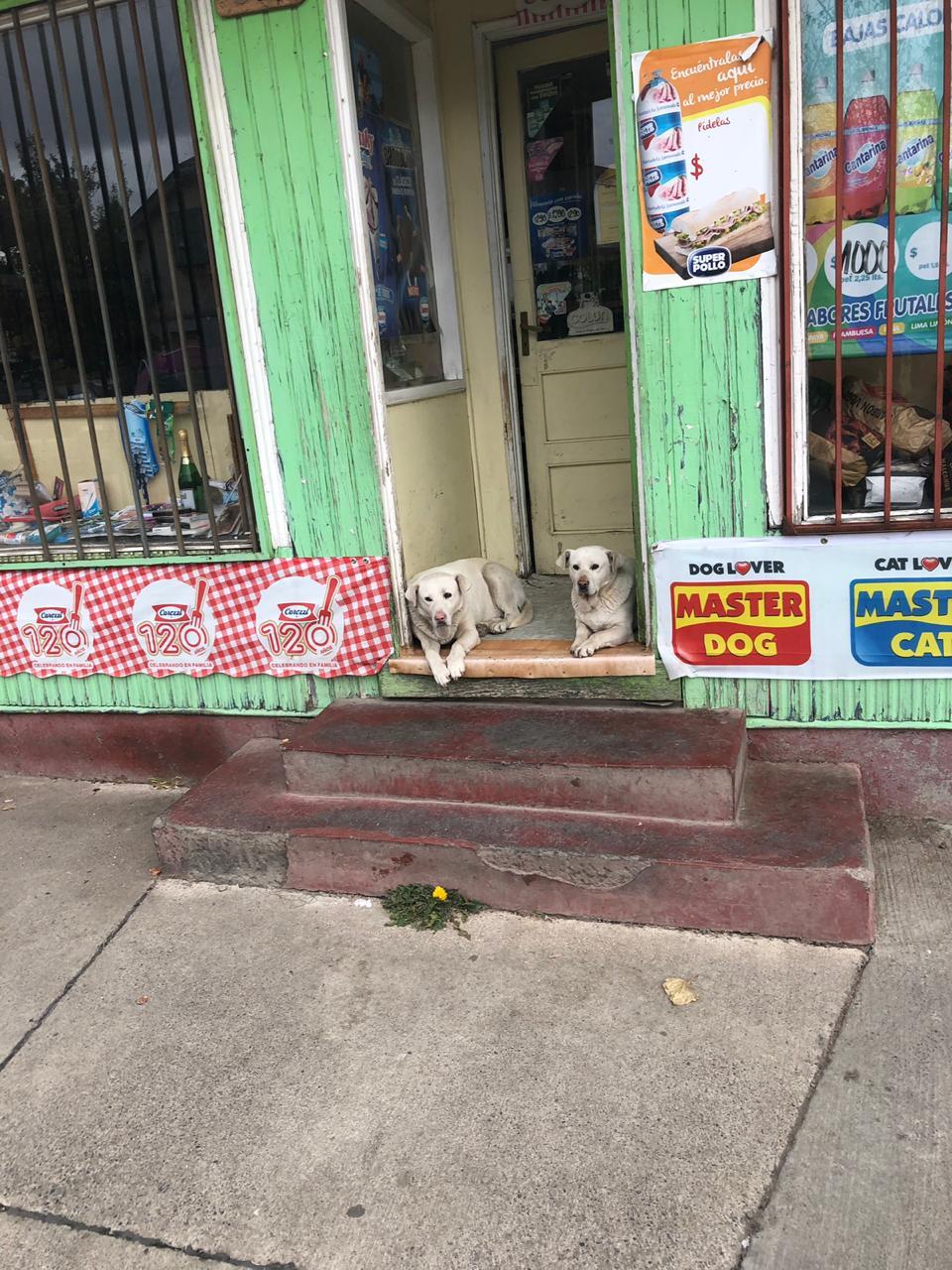By Isadora Nogueira , CASA Chile Spring 2019 (Barnard College ’20)
 En Valle de la Luna, San Pedro de Atacama
En Valle de la Luna, San Pedro de Atacama
When I first came to Chile, my answer for “¿y por qué Chile?” were platitudes about the natural beauty of the Andes and the culture and rich city-life of Santiago. But now when I think of what I most admire in Chile, I will think of bold, unrelenting women, demanding rights over their bodies, while tanks silently threaten from the sides of La Alameda. I will think of plump, well loved street dogs, who protectively trot alongside you on your walk home. I will fondly remember the cheap vegan hamburgers from street venders, loaded up with pebre and pesto-mayo. I will think of dancing reggaeton and techno, the constant humor and tenderness I was shown, and the ability people have here to connect instantly and include you in the world.
I became particularly enchanted with the way of dress, the colorful scarves, dyed hair and big earrings on men and women. Or, alternatively, the exaggerated big platform sneakers with oversized jackets. I will miss jaw-dropping trips to new landscapes, like the snowcapped volcanoes of Pucón, the mars-like scenes of Atacama’s Valle de la Luna, and the minty-blue rivers that across the jagged Patagonia mountains. I’m going to be deeply nostalgic for getting lost in the woods of the Cerro San Cristobal, the man on Cerro Santa Lucia who plays harmonica to songs from Grease to the tourists, and the waterfalls of Aguas de Ramón.
There is no one single experience of Chile, and unlike more common study abroad destinations like France, Spain or even Argentina, there won’t be a neat cultural package presented to you. But it is the complications, rough edges, and the rawness of the country that I find the most interesting. Chile is deeply mired in questions of capitalism, feminism, immigration, indigenous rights, classism, and climate change, and experiences a constant tug of war between its hard-core conservative and radically progressive elements. The country is full of contradictions, and it is crucial to leave the land of Vitacura’s glistening towers and the insular communities that lie above Plaza Italia to understand its complexities. The Pro-Seminar gave me much of the context to make sense of my experience, but most of the fun came from unraveling the culture myself.
 El patio de mi casita
El patio de mi casita
The best decisions I made here were to come early and work in Santiago center through Workaway.com, move into a charming little blue and white house for foreigners, and take classes at the public university (La Universidad de Chile). In these spaces, I learned how to learn, laugh and have fun in distinctly Chilean ways. It will be hard for me to go home and replace my hard-earned Chilean words with plain English. To go from saying “weon” to “girl!”, “cachai” to “understand? or “fome” to “boring…” But while chilenismos might slip away from my speech, my time here will be imprinted on me for the rest of my life.

